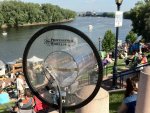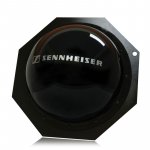How do I determine what "spin" or polarity circularly polarized antennas have? I see a lot of the Professional Wireless Systems helicals and the occasional Sennheiser A5000CP. My understanding is that, when using these antennas on the send and receive ends, I need to use the opposite spin on one as otherwise they will be out of polarity and there will be cancellation. In practice I only see about a 6-10dB loss of signal from using the same polarity at both ends, but that's still pretty significant. Life is easy when I'm only using the helical on one end or the other, but sometimes I need to get the most range possible.
I'm talking about these:


When I'm working with a company that has both polarities, of course, I can just look at the antennas. But when I need to rent in antennas of the same or opposite polarity, how do I know how to label them? PWS labels their boxes "Left" or "Right", but not their antennas, so once the antenna has come out of the box it's anyone's guess. I can just look at the spinny antenna bit, but I don't know which way is supposed to be which... from the front or the back? On the Sennheiser, I guess I'm just fucked? Is it even helical? It's circularly polarized, but it has a much wider pattern than the PWS... perhaps a function of its (the PWS antenna's) length?
I just want to know how to label these when I see them so I can better coordinate amongst the companies I work for regularly.
I'm talking about these:


When I'm working with a company that has both polarities, of course, I can just look at the antennas. But when I need to rent in antennas of the same or opposite polarity, how do I know how to label them? PWS labels their boxes "Left" or "Right", but not their antennas, so once the antenna has come out of the box it's anyone's guess. I can just look at the spinny antenna bit, but I don't know which way is supposed to be which... from the front or the back? On the Sennheiser, I guess I'm just fucked? Is it even helical? It's circularly polarized, but it has a much wider pattern than the PWS... perhaps a function of its (the PWS antenna's) length?
I just want to know how to label these when I see them so I can better coordinate amongst the companies I work for regularly.
